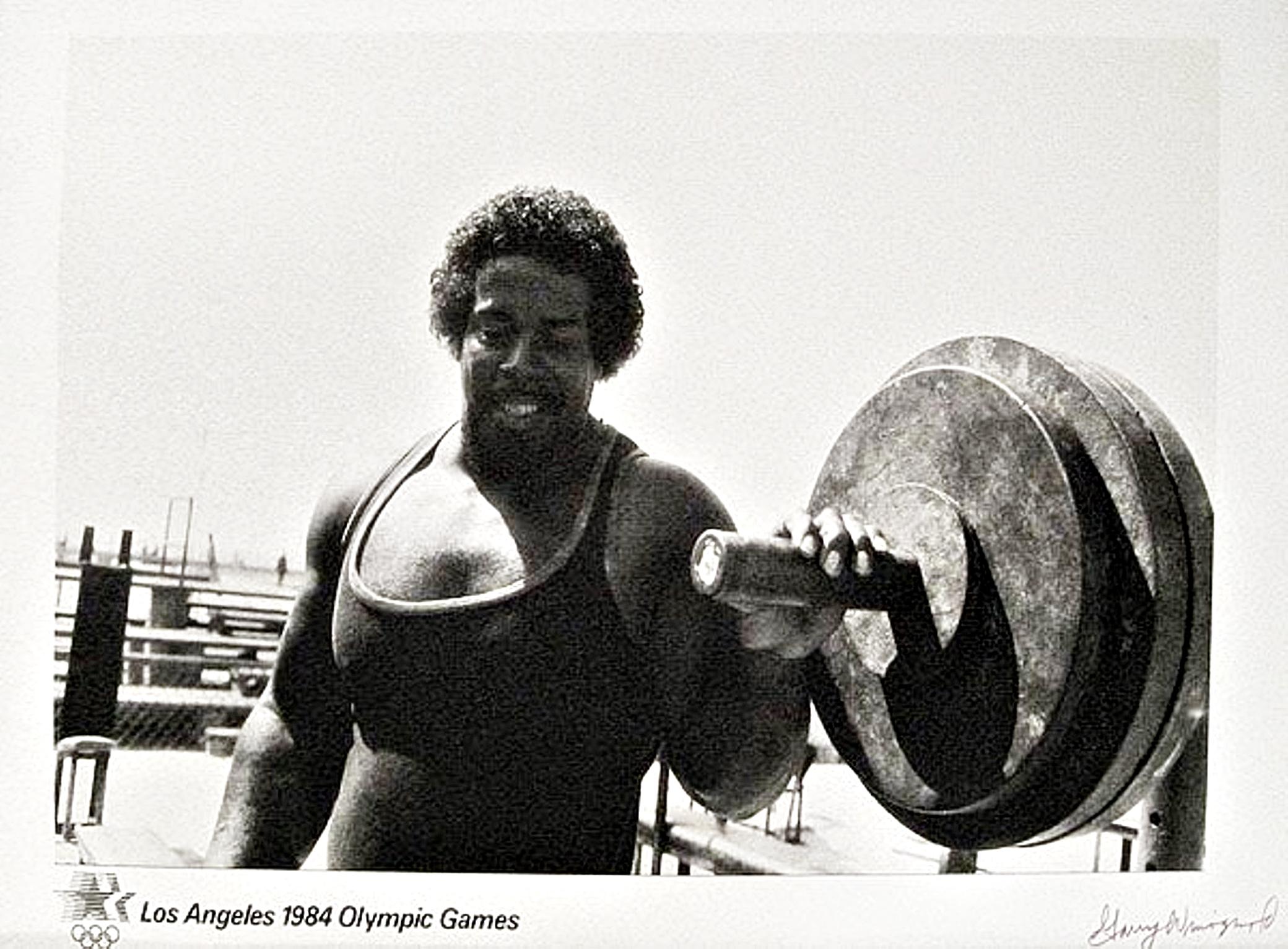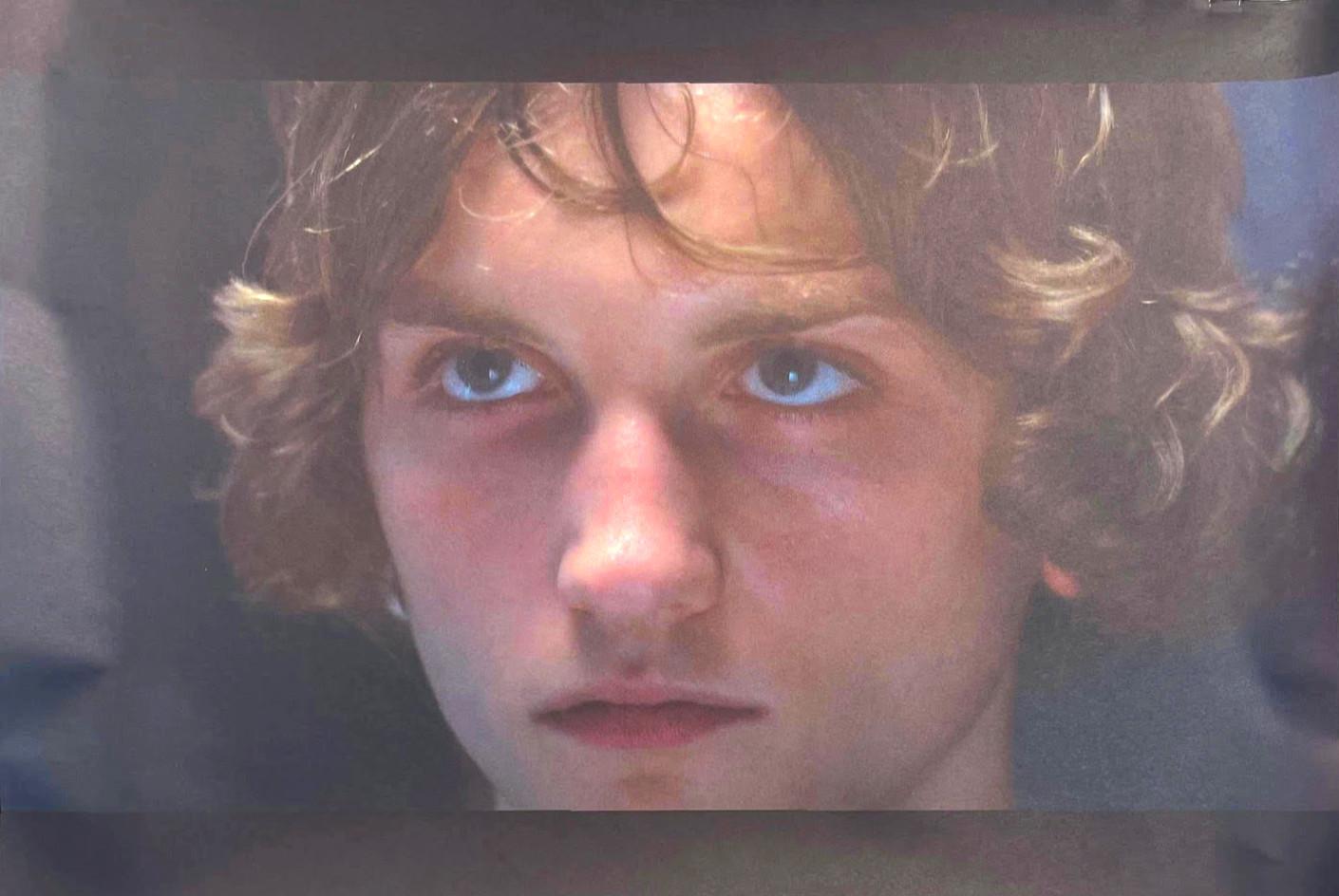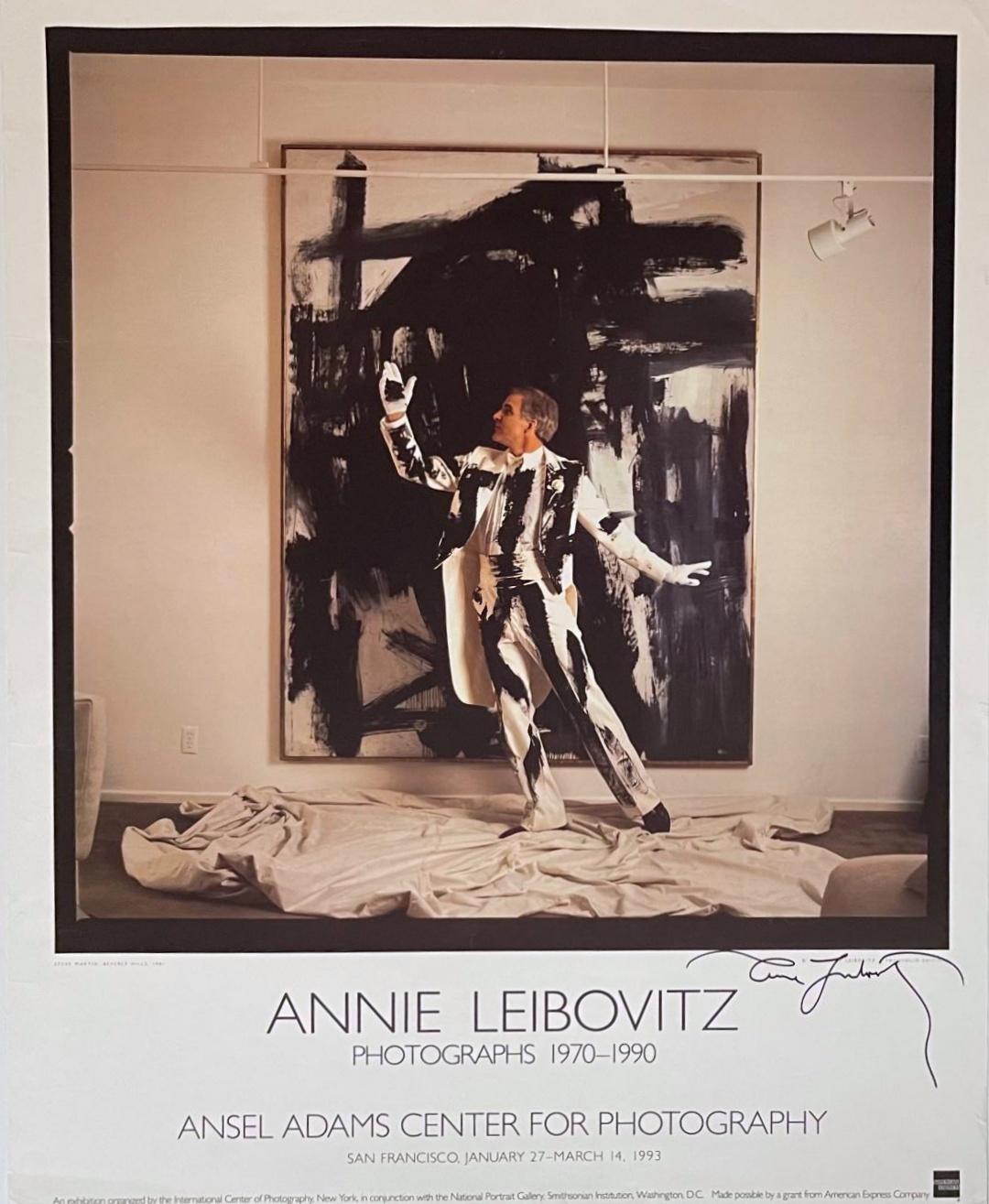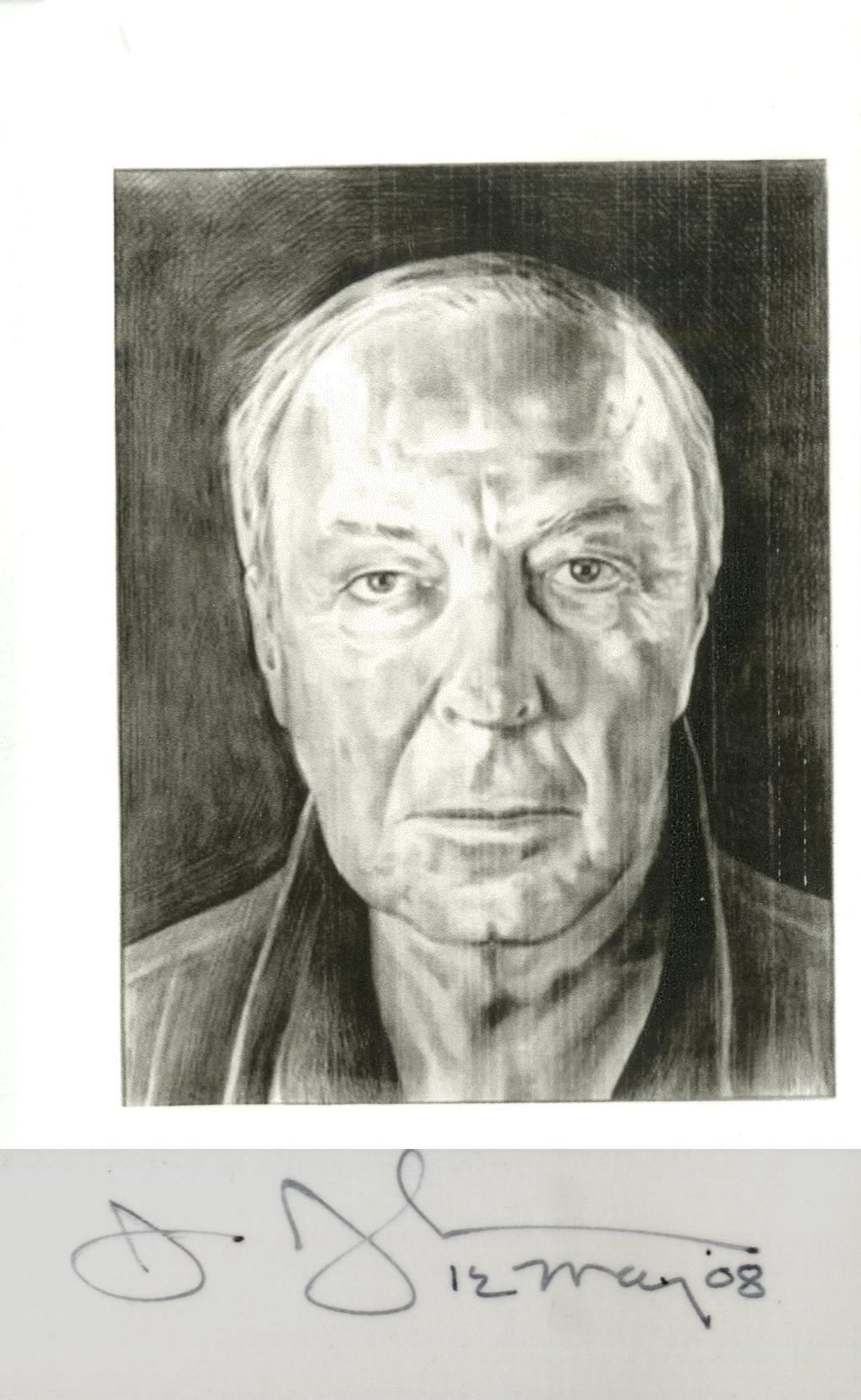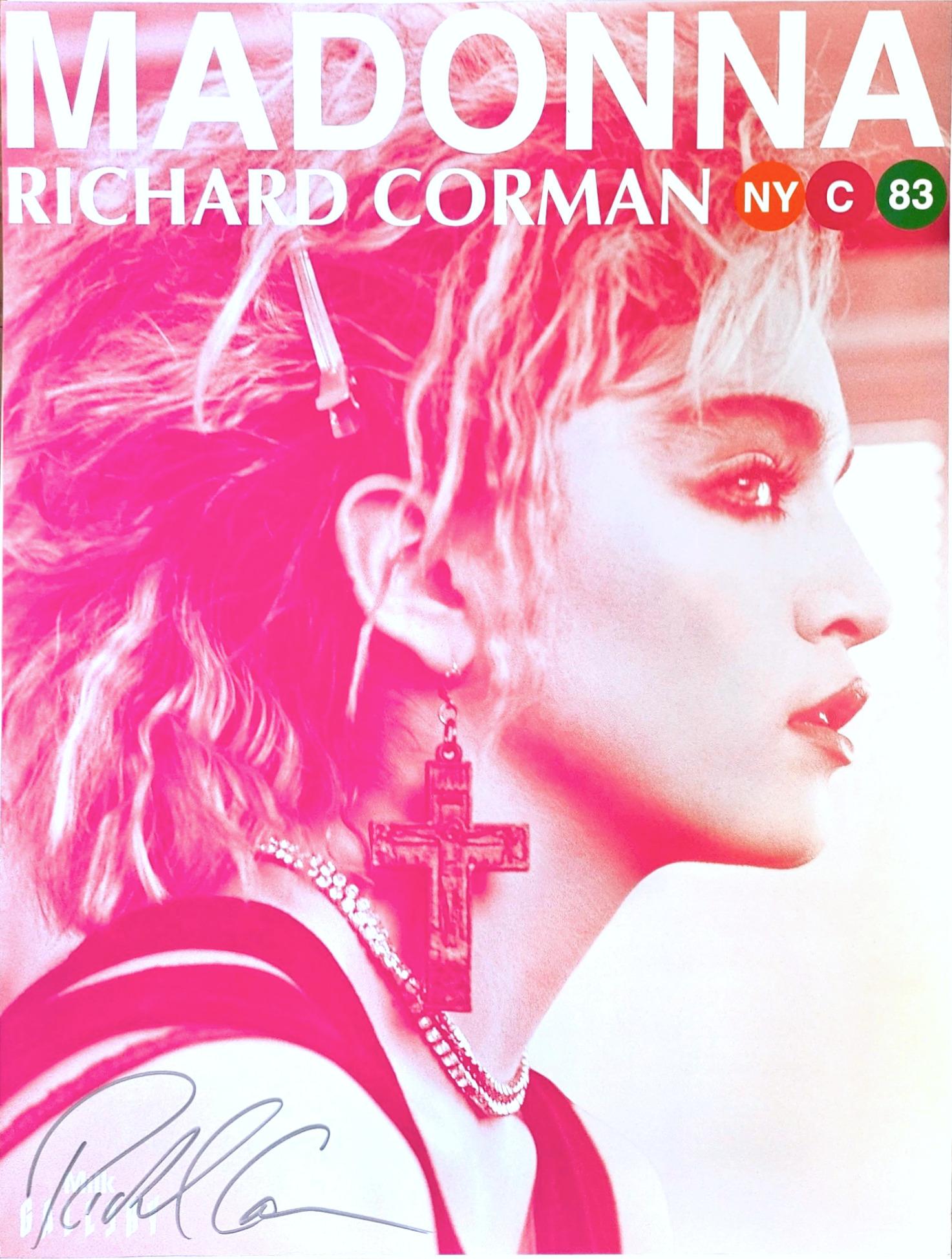Chuck ClosePhil Limited Edition rubber stamp Portrait of Philip Glass, pencil no. 243/10001976
1976
About the Item
- Creator:Chuck Close (1940, American)
- Creation Year:1976
- Dimensions:Height: 8 in (20.32 cm)Width: 8 in (20.32 cm)
- Medium:
- Movement & Style:
- Period:
- Condition:
- Gallery Location:New York, NY
- Reference Number:1stDibs: LU1745214090952
Chuck Close
Chuck Close was renowned for his highly inventive techniques of painting the human face and was best known for his large-scale, photo-based portrait paintings.
After earning his MFA from Yale in 1964, Close took his place atop the American art world by creating large-scale, Photorealistic portraits that have creatively blurred the distinction between photography and painting. In 1988, Close was paralyzed following a rare spinal artery collapse; despite the physical limitations, the artist pressed forward with his work. With a brush taped to his wrist, he continued to paint.
In 2000, Close was presented with the prestigious National Medal of Arts by President Clinton and was appointed by President Obama to serve on the President’s Committee on the Arts and the Humanities.
"Yes, it is hard to paint blur," Close said. "There are some works I made by using a grid of string to help me perceive changes in depth of focus — something artists have done for centuries. The depth of field in the daguerreotypes is a function of the process of making an image that way, with a very short, very bright flash of light."
Although Close had employed various painterly styles throughout his career, he is perhaps best known for his grid set on the diagonal. Close’s paintings are all-over images where the background of the picture – the negative space – is as important as the face itself, and one cannot exist without the other.
Close often took his family and friends as models, making monumental and classical works that are bold in their simplicity. His work has been the subject of more than 200 solo exhibitions in more than 20 countries, including major retrospective exhibitions at New York's Museum of Modern Art, the Metropolitan Museum of Art, the State Hermitage Museum in St. Petersburg, the Museo Nacional Centro de Arte Reina Sofia de Madrid and the San Francisco Museum of Modern Art.
(Biography provided by Weng Contemporary – ArtXX AG)
- ShippingRetrieving quote...Ships From: New York, NY
- Return PolicyA return for this item may be initiated within 1 day of delivery.
- Afghan Girl iconic poster: Sharbat Gula, Pakistan (Hand Signed by Steve McCurry)By Steve McCurryLocated in New York, NYSteve McCurry Sharbat Gula, Afghan Girl, Pakistan (Hand Signed), 1984 Offset Lithograph poster Hand signed by the photographer in black felt pen on the front 24 × 20 inches Unframed...Category
1980s Realist Figurative Prints
MaterialsFelt Pen, Lithograph, Offset
- Portrait of Bob Pettis, SIGNED Lt. Ed with COA from publisher, Olympic CommitteeBy Garry WinograndLocated in New York, NYGarry Winogrand Portrait of Bob Pettis with official COA, 1982 Offset Lithograph Signed in graphite pencil by the artist on the front. Unnumbered. 24 inches (Vertical × 36 inches (h...Category
1980s Realist Portrait Prints
MaterialsLithograph, Offset, Felt Pen
- The Smell of Us (Hand signed poster)By Larry ClarkLocated in New York, NYLarry Clark The Smell of Us (Hand signed poster), 2015 Offset lithograph poster Pencil signed by Larry Clark on the back 10 1/2 × 15 1/2 inches Unframed Limited edition poster; hand ...Category
2010s Realist Portrait Prints
MaterialsLithograph, Offset
- Poster: Photographs 1970-1990 with Steve Martin (Hand signed by Annie Leibovitz)By Annie LeibovitzLocated in New York, NYAnnie Leibovitz Photographs 1970-1990 (Hand signed by Annie Leibovitz), 1993 Offset lithograph poster (hand signed) Boldly signed in black marker on the front 30 × 24 inches Ansel Adams Center for Photography, San Francisco in collaboration with the National Portrait Gallery, Smithsonian Institution Unframed This offset lithograph poster was published on the occasion of the Annie Leibovitz' 1993 survey exhibition at the Ansel Adams Center for photograph in San Francisco. The photograph of course depicts the actor and renowned art collector Steve Martin in front of a Franz Kline painting entitled Rue, which Martin apparently once owned. Steve Martin was said to have always wanted to be part of the painting; Complete with black brushstrokes on his white suit, Martin realized his dream and posed for Leibowitz in front of Rue. (Of course the irony is that Martin cuts a gleeful, almost clownish pose in front of a painting, Rue, whose very name means sorry and regret. Perhaps Martin will rue the day he sold this Franz Kline!) A companion photo appeared on the cover of Rolling Stone magazine. The Portland Art Museum also exhibited the photo Annie Leibovitz took of Steve Martin in Beverly Hills when he posed for his portrait. A coveted poster when hand signed by Annie Leibovitz Provenance: Collection of former Trustee of the Portland Museum of Art Annie Leibovitz Biography: Born in 1949, Annie Leibovitz graduated from the San Francisco Art Institute in 1971. Photos she took during college while living on a kibbutz in Israel and working to uncover the remains of King Solomon’s Temple helped land her a job at Rolling Stone magazine, where she was quickly named chief photographer. Between photographing John Lennon and documenting the Rolling Stones’ 1975 concert tour, Liebovitz reinforced her reputation as the most prominent celebrity photographer of her generation. In 1983, she moved to Vanity Fair, where she broadened her range of subjects from rock stars to other public figures like the Dalai Lama. In 1991, Leibovitz became only the second living photographer to be featured in an exhibit at the National Portrait Gallery. Overview and Early Life For decades, Annie Leibovitz and her camera have exposed to the public eye subtleties of character in rock stars, politicians, actors, and literary figures that lay beneath their celebrity personae. Her work first fueled the American fascination with rock ’n’ roll dissidents in the 1970s and then, in the 1980s and 1990s, captured the essence of the day’s great cultural icons. Her photographs make plain that, as Leibovitz herself once put it, she was not afraid to fall in love with her subjects. Anna-Lou Leibovitz was born on October 2, 1949, in Westbury, Connecticut. She was the third of six children of Marilyn Leibovitz, a modern dance instructor, and Sam Leibovitz, an air force lieutenant colonel. As the daughter of a career military officer, Leibovitz moved with her family frequently from town to town. The constant relocation fostered strong ties among the six Leibovitz children. Education and Work with Rolling Stone Leibovitz attended the San Francisco Art Institute from 1967 until 1971. She shifted her focus from painting to photography early in her college career. In 1969, she lived on Kibbutz Amir in Israel. The archaeological team on which she worked during her five months in Israel uncovered the remains of King Solomon’s Temple. By the time Leibovitz received her bachelor of fine arts degree in 1971, her photographs of Israel and a picture of the poet Allen Ginsberg at a San Francisco peace march had already landed her a job at the music magazine Rolling Stone. Soon after she was hired, Leibovitz convinced editor Jann Wenner to grant her a breakthrough assignment. Leibovitz flew with Wenner to New York City to interview John Lennon. A photo from that trip adorned the cover of Rolling Stone, the first of dozens Leibovitz would shoot over the course of her career with the music magazine. In 1973, she was named chief photographer. The mid-1970s brought Leibovitz an increasing amount of notoriety and its concomitant tribulations. In 1975, the rock band the Rolling Stones invited Leibovitz to document their six-month concert tour. Living in the world of her subjects, her camera did not shield Leibovitz from the rock ’n’ roll life-style. She began using cocaine on tour and struggled for years afterward to recover. Photography Exhibits and Move to Vanity Fair In 1983, Leibovitz put together her first major exhibit, which led to the publication of her book Annie Leibovitz: Photographs (1983). Her ability to work with her subjects to get beneath the veneer of superficiality that typically characterizes Hollywood paparazzi has reinforced her reputation as the most prominent celebrity photographer of her generation. The rapport Leibovitz develops with her subjects creates an atmosphere in which celebrities will strike the most unconventional of poses and show emotions that other photographers could not evoke. Among her most famous shots are a naked John Lennon curled around a fully clothed Yoko Ono, Bette Midler in a bed of roses, and the Blues Brothers painted blue. In 1983, after more than a decade of photographing such rock ’n’ roll legends as Lennon, Bob Dylan, Stevie Wonder, and Bruce Springsteen, Leibovitz left Rolling Stone for Vanity Fair. This move gave her the opportunity to shoot a broader range of subjects, including the Dalai Lama, Vaclav Havel, and Donald Trump. Her art did not suffer from the change. The American Society of Magazine Photographers selected her as the Photographer of the Year in 1984. Advertising Work, Awards, and Honors In addition to her work for Vanity Fair, Leibovitz became active in advertising photography. In 1986, she was the first photographer ever to be commissioned to design and shoot posters for the World Cup. A campaign she designed for American Express brought Leibovitz a storm of critical acclaim. In 1987, she received the Innovation in Photography Award from the American Society of Magazine Photographers, a Clio Award from Clio Enterprises, and a Campaign of the Decade Award from Advertising Age for the “Portraits” campaign she produced for American Express. Then, in 1990, the International Center of Photography recognized the same work by giving Leibovitz the Infinity Award for applied photography. n 1991, Leibovitz became only the second living photographer to be featured in an exhibit at the National Portrait Gallery in Washington, D.C. She published this retrospective in book form under the title Annie Leibovitz: Photographs, 1970–1990. In anticipation of the centennial Olympic games, Leibovitz spent two years photographing athletes...Category
1990s Realist Figurative Prints
MaterialsInk, Offset, Lithograph
- Postcard of Phong Bui's portrait of Jasper Johns, hand signed by Jasper JohnsBy Jasper JohnsLocated in New York, NYJasper Johns and Phong Bui Offset lithograph card of portrait of Jasper Johns by Phong Bui (hand signed and dated by Jasper Johns), 2008 Card depicting a portrait of Jasper Johns by ...Category
Early 2000s Realist Portrait Prints
MaterialsPostcard, Lithograph, Offset, Ink
- Madonna NYC 83 Figurative Pop historic Pop poster hand signed by photographerBy Richard CormanLocated in New York, NYRichard Corman Madonna NYC 83, 2013 Offset lithograph poster on high quality thin card paper (hand signed by the photographer) Hand signed by Richard Corman on the lower left front 3...Category
2010s Pop Art Portrait Prints
MaterialsOffset, Pencil, Lithograph
- TAA Trans-Australia Airlines original vintage travel posterLocated in Spokane, WAOriginal TAA Trans Australia Airlines vintage travel poster. Linen-backed and ready to frame. TAA Airlines was started in 1946 and was renamed Australian Airlines in 1986. In 1...Category
20th Century Realist Portrait Prints
MaterialsOffset
- WNEW Frank SinatraLocated in Brooklyn, NYPaper Size: 45 x 29.5 inches ( 114.3 x 74.93 cm ) Image Size: 41.75 x 26.75 inches ( 106.045 x 67.945 cm ) Framed: No Condition: B: Very Good Condition, with signs of handling or age...Category
Mid-20th Century Realist Figurative Prints
MaterialsOffset
- Vintage David Hockney poster Young Playwrights Festival 1982By (after) David HockneyLocated in New York, NYA masked performer gestures his hands, wearing bright green garb, a long hat, and jaunty black shoes with white socks. Hockney paints in loose strokes of color: garnet, sapphire, bright yellow, and emerald green. This vintage David Hockney...Category
1980s Realist Figurative Prints
MaterialsLithograph
- Vintage David Hockney Poster Galerie der Spiegel 1970 (Boy in an Egg) with birdBy David HockneyLocated in New York, NYThis vintage exhibition poster reproduces The Boy Hidden in an Egg by David Hockney from his Six Fairy Tales from the Brothers Grimm, 1969. A shirtless young man curls up inside a dark grey speckled egg, as a small bird looks on. The poster was produced in 1981 to commemorate Hockney’s 1970 exhibition at Galerie Der Spiegel...Category
1970s Realist Figurative Prints
MaterialsLithograph
- Cap'n A.B Dick (A) gray fisherman portrait sou'wester hat R.B. Kitaj lithographBy Ronald Brooks KitajLocated in New York, NYKitaj’s drawing is of a fisherman in profile, wearing a sou’wester: a collapsible rain hat. The image is a wry portrait, ostensibly of Albert Blake Dick, ...Category
1970s Realist Portrait Prints
MaterialsLithograph
- Vintage David Hockney poster, XIV Olympic Winter Games 1984, The SkaterBy David HockneyLocated in New York, NYVintage David Hockney poster for the XIV 1984 Olympic Games in Sarajevo published as part of the official 1984 Olympic Fine Art Posters Series. The Olympic Committee commissioned 15 ...Category
1980s Realist Portrait Prints
MaterialsLithograph
